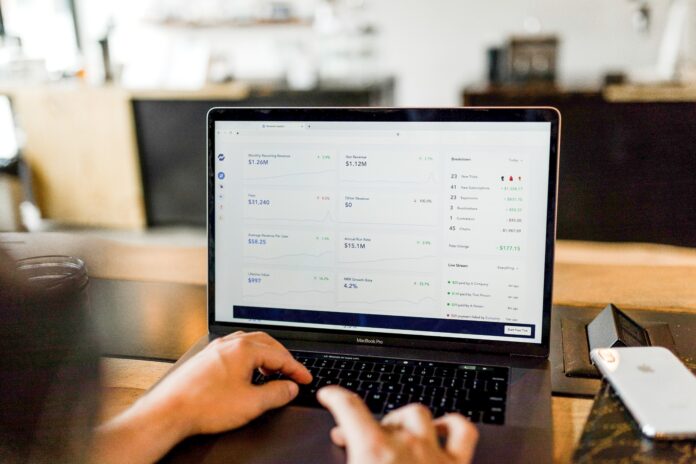Internal Linking is a crucial aspect of website optimization and search engine optimization (SEO) strategies. It refers to the practice of linking pages within the same website through hyperlinks. These hyperlinks connect one webpage to another, allowing users to navigate seamlessly between related content and enabling search engines to understand the website’s structure and hierarchy.
Internal Linking plays a vital role in enhancing user experience by providing easy access to relevant information. By strategically placing internal links throughout a website, website owners can guide visitors to explore different pages and discover valuable content. Moreover, Internal Linking helps search engines like Google and Bing crawl and index web pages more efficiently, improving the overall visibility and ranking of the website in search engine results pages (SERPs).
One of the primary purposes of Internal Linking is to establish connections between different pages and create a logical and hierarchical structure within a website. By linking related content together, website owners can provide users with additional context and relevant information to enhance their understanding of a specific topic. For example, a blog post discussing the benefits of a healthy diet could include internal links to other articles on weight loss tips, nutritious recipes, or exercise routines. This way, readers can navigate seamlessly to further explore related topics and delve deeper into the website’s content.
From an SEO perspective, Internal Linking can significantly impact a website’s visibility in search engine rankings. When search engine bots crawl a website, they follow internal links to discover and index new pages. The presence of well-structured internal links ensures that all pages are accessible to search engines, allowing them to index the entire website more effectively. Without internal links, some pages might remain hidden or orphaned, resulting in reduced visibility in search results.
Internal Linking also plays a crucial role in distributing link equity or link juice throughout a website. Link equity refers to the value or authority passed from one page to another through hyperlinks. When a page receives multiple internal links from other pages within the same website, it gains more link equity, signaling its importance to search engines. Consequently, pages with higher link equity are more likely to rank higher in search results. By strategically implementing internal links, website owners can channel link equity to important pages, such as cornerstone content or product pages, to boost their visibility and organic traffic.
It is essential to understand the different types of internal links that can be used within a website. The most common type is contextual links, which are anchor text-based hyperlinks embedded within the body of the content. These links provide users with additional information related to the text they are reading, improving the overall user experience. Contextual links can be used to link to relevant blog posts, product pages, or other resources within the website.
Another type of internal link is navigational links, which are usually found in website menus, sidebars, or footers. Navigational links act as a roadmap for users, helping them navigate different sections or categories of a website. These links are typically present on every page and provide easy access to important pages or sections, such as the homepage, about us, contact, or product/service listings. Navigational links are crucial for user experience, ensuring that visitors can quickly find their way around the website.
In addition to contextual and navigational links, there are also hierarchical links. These links establish a hierarchical structure within a website, organizing content into categories and subcategories. Hierarchical links are commonly used in websites with a large volume of content, such as e-commerce sites or news portals. By linking pages in a hierarchical manner, website owners can guide users through different levels of content and provide a clear navigation path.
When implementing Internal Linking, it is important to consider certain best practices to maximize its effectiveness. First and foremost, the anchor text used for internal links should be descriptive and relevant to the linked page’s content. Clear and concise anchor text helps search engines understand the context and relevance of the linked page. For example, instead of using generic anchor text like “click here” or “read more,” it is better to use specific keywords or phrases that accurately describe the content of the linked page.
Furthermore, it is advisable to prioritize linking to pages with high-quality, valuable content. Internal links to cornerstone articles, in-depth guides, or authoritative resources can boost their visibility and authority within the website. By highlighting these important pages through internal links, website owners can signal their significance to both users and search engines.
It is also beneficial to ensure a balanced distribution of internal links across the website. Every page should receive a reasonable number of internal links to improve its visibility and accessibility. However, it is important to avoid overloading a single page with excessive internal links, as this may dilute the link equity and confuse users. A balanced approach to internal linking helps search engines understand the website’s structure and relevance hierarchy.
When implementing internal links, website owners should aim for a natural and user-friendly linking structure. The placement of internal links should make sense within the context of the content and provide value to users. It is crucial to avoid spammy or manipulative tactics, such as excessive keyword stuffing or creating irrelevant links solely for the purpose of SEO. Instead, internal links should be genuinely helpful, guiding users to related content and enhancing their overall browsing experience.
Regularly auditing and updating internal links is another important practice. As websites evolve and content gets added or removed, it is essential to ensure that internal links remain valid and lead to the intended pages. Broken or outdated internal links can negatively impact user experience and hinder search engine crawling and indexing. Conducting periodic link audits and fixing broken links is crucial to maintain a well-optimized website.
Beyond the user and SEO benefits, internal linking also plays a role in website conversion optimization. By strategically placing internal links within relevant content, website owners can guide users toward conversion-oriented pages, such as product pages or contact forms. Internal links can act as subtle prompts, encouraging visitors to take desired actions and increasing the likelihood of conversions. For example, a blog post discussing the benefits of a particular product can include internal links to the product page, making it easier for interested readers to make a purchase.
In conclusion, internal linking is a fundamental aspect of website optimization and SEO. It allows website owners to establish connections between different pages, improve user experience, facilitate search engine crawling and indexing, and distribute link equity effectively. By strategically implementing internal links with descriptive anchor text, prioritizing valuable content, maintaining a balanced linking structure, and conducting regular link audits, website owners can maximize the benefits of internal linking. Moreover, internal linking can contribute to conversion optimization by guiding users towards conversion-oriented pages. Understanding and implementing internal linking best practices can greatly enhance the visibility, usability, and success of a website in the online landscape.






















